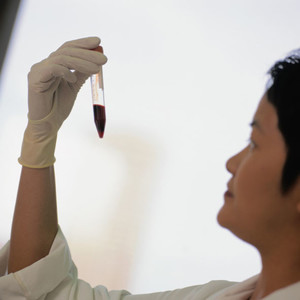Results from a phase I trial of biosimilar infliximab have proven the equivalence of South Korean biotechnology company Celltrion’s biosimilar (CT-P13) and the reference product – Johnson & Johnson’s rheumatoid arthritis blockbuster Remicade (infliximab) in terms of pharmacokinetic parameters, as well as in safety and efficacy in patients with active ankylosing spondylitis [1].
The results of the phase I trial were presented at the Annual Congress of the European League Against Rheumatism (EULAR) held in Berlin, Germany, from 6–9 June 2012.
Phase I trial
For the phase I trial 250 patients with active ankylosing spondylitis were randomised 1:1 to receive either CT-P13 or infliximab (5 mg/kg, 2-hour IV infusion per dose) at weeks 0, 2 and 6 (dose-loading phase) and at weeks 14, 22 and 30 (maintenance phase).
Pharmacokinetic parameters
The mean (% coefficient of variance [CV]) area under curve (AUCτ) was 34855.45 (34.3%) μg-h/mL and 34688.71 (45.4%) μg-h/mL in the CT-P13 and infliximab arms, respectively. The mean (% CV) peak concentration at steady state Cmax,ss was 153.52 (27.6%) μg/mL and 150.39 (26.9%) μg/mL in the CT-P13 and infliximab arms, respectively. The ratio (%) between the geometric means of the AUCτ and Cmax,ss values in the CT-P13 and infliximab arms were 104.1% (90% confidence interval [CI] 93.9% to 115.4%) and 101.5% (90% CI 94.6% to 108.9%), respectively, between weeks 22 and 30, indicating pharmacokinetic equivalence in terms of AUCτ and Cmax,ss.
Efficacy
Assessments of efficacy were carried out as secondary endpoints at week 30 and also proved to be comparable. Estimation of improvement in disease using ASAS20 and ASAS40 response criteria (see below) gave results of 70.5% for CT-P13 versus 72.4% for infliximab and 51.8% versus 47.4%, respectively.
Safety
Adverse events (AEs) considered by the investigators to be related to study treatment were reported in 57 (44.5%) patients and 58 (47.5%) patients in the CT-P13 and infliximab arms, respectively. Related AEs due to infection were reported for 24/128 (18.8%) patients and 22/122 (18.0%) patients in the CT-P13 and infliximab treatment groups, respectively. AEs due to infusion reactions considered related to study drug were reported in 5 patients in the CT-P13 arm and 6 patients in the infliximab arm. Tuberculosis was reported in 2 patients in the CT-P13 arm and in 1 patient in the infliximab arm.
The phase I trial proved that CT-P13 and infliximab are equivalent in terms of AUCτ and Cmax,ss in patients with ankylosing spondylitis. In addition, CT-P13 was well tolerated with an efficacy and safety profile comparable to that of infliximab up to week 30.
ASAS response criteria
The ASAS response criteria ASAS20 is defined as an improvement of at least 20% and absolute improvement of at least 10 units on a 0–100 mm scale in at least three of the following domains:
- Patient global assessment measured on a VAS scale with extremes labelled ‘none’ and ‘severe’.
- Pain assessment represented by the average of total and nocturnal pain scores, both measured on a VAS scale with extremes labelled ‘no pain’ and ‘most severe pain’.
- Function represented by BASFI average of 10 questions regarding ability to perform specific tasks as measured by VAS with extremes labelled ‘easy’ and ‘impossible’.
- Morning stiffness, represented by the average of the last two questions on the 6-question BASDAI regarding morning stiffness as measured by VAS: one with extremes labelled ‘none’ and ‘very severe’; the other marking duration of morning stiffness between ‘0’ and ‘2 or more hours’.
Additionally, absence of deterioration (of at least 20% and absolute change of at least 10 units on a 0–100 mm scale) in the remaining domain should be documented.
The ASAS40 is defined, similarly to ASAS 20, as an improvement of at least 40% and absolute improvement of at least 20 units on a 0–100 mm scale in at least three of the four domains, without worsening in the remaining domain.
Conflict of interest
Authors of the study declared that they had no conflicts of interest to report.
Editor’s comment
If you are interested in contributing a research article in a similar area to GaBI Journal, please send us your submission here.
Related articles
Biosimilar infliximab equivalence proven in phase III trial
EMA finalises biosimilar monoclonal antibody guidelines
Reference
1. Yoo D, et al. A randomized, double-blind, phase 3 study demonstrates clinical equivalence of CT‑P13 to infliximab when co-administered with methotrexate in patients with active rheumatoid arthritis. Abstract presented at: European League Against Rheumatism (EULAR) Congress. Berlin, Germany, 6–9 June 2012; abstract no. FRI0 143.
Source: Celltrion, EMA, EULAR








 0
0











Post your comment